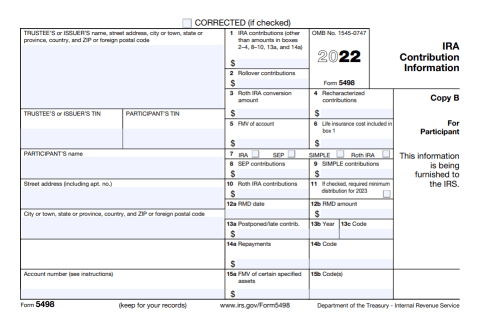April 1 Deadline Approaching for IRA and 401(k) Withdrawals: IRS Reminds Retirees to Take Action Now
ST
Summary:
The IRS is reminding retirees who turned 72 in 2022 that April 1, 2023, is the deadline to start taking required minimum distributions (RMDs) from their IRA, 401(k), and other similar retirement plans. This special rule allows them to delay their first RMD until April 1, 2023. Taxpayers who receive their first RMD in 2023, on or before April 1, are required to receive their second RMD by December 31 of the same year. The April 1 deadline only applies to the first year’s required distribution, and all subsequent RMDs must be made by December 31st. Check out the IRS website for useful resources and publications to assist individuals in calculating their RMD.
Retirees who turned 72 in 2022 are reminded by the IRS that for most cases, April 1, 2023, is the deadline to begin receiving required minimum distributions (RMDs) from their Individual Retirement Arrangements (IRAs), 401(k)s, and similar workplace retirement plans.
Typically, the payments, called required minimum distributions (RMDs), are made by the end of the year. However, if you turned 72 in 2022 and own an IRA or participate in a workplace retirement plan, you’re covered by a special rule that allows you to delay your first RMD until as late as April 1, 2023. This special April 1 rule applies to IRA owners and other plan participants who were born after Dec. 31, 1949.
Compare Savings Accounts
Compare savings accounts. Discover your best option.
2 Payments Same Year
The April 1 RMD deadline only applies to the first year’s required distribution. For all subsequent years, the RMD must be made by December 31st.
Taxpayers who receive their first RMD in 2023, on or before April 1st, are required to receive their second RMD by December 31st of the same year. Although the first distribution is actually the required 2022 distribution, it is taxable in 2023 and should be reported on the 2023 tax return along with the regular 2023 distribution.
Types of retirement plans requiring RMDs
Distribution rules apply to traditional, SEP, and SIMPLE IRAs while the owner is alive and to various workplace retirement plans such as 401(k), 403(b), and 457(b) plans. However, RMDs do not apply to Roth IRAs.
The IRA trustee must report the RMD amount to the owner or offer to calculate it. You can usually find the RMD amount on Form 5498 in Box 12b. If you need to take an RMD for 2022, which is required by April 1, 2023, you can find the RMD amount on the 2021 Form 5498, typically issued to the owner during the beginning of 2022.

Delayed RMDs
Some workplace retirement plan participants can delay their RMD beyond the mandatory April 1 deadline for traditional IRA owners and most participants in workplace retirement plans.
Most participants who are still employed by the same company can hold off until April 1 of the year following their retirement, provided their workplace plan allows it. But this does not apply to 5% owners of the business sponsoring the retirement plan or SEP and SIMPLE IRA plan participants. To learn more about the Tax on Excess Accumulation, check out Publication 575.
Employees of public schools and certain tax-exempt organizations with 403(b) plan accruals before 1987 should consult their employer, plan administrator, or provider for guidance on handling these accruals.
How IRS online resources and publications can help
The IRS.gov website has a wealth of information to help answer questions about Required Minimum Distributions (RMDs). For most taxpayers, Table III (Uniform Lifetime) is used to calculate their RMD, but for married taxpayers with a spouse who is more than 10 years younger and is their only beneficiary use Table II.
For the 2022 RMD, the life expectancy tables in Appendix B of Publication 590-B can be used. The RMD for someone aged 72 in 2022 will typically be based on a distribution period of 27.4 years, as indicated in Table III. To calculate the RMD for 2022, simply divide the balance on Dec. 31, 2021 by 27.4. Additionally, Publication 590-B has helpful worksheets, examples, and other information to assist individuals in calculating their RMD.
Key takeaways
- Retirees who turned 72 in 2022 have until April 1, 2023, to begin receiving required minimum distributions (RMDs) from their IRAs, 401(k)s, and similar workplace retirement plans.
- The April 1 deadline only applies to the first year’s required distribution, and all subsequent RMDs must be made by December 31st.
- RMDs apply to traditional, SEP, and SIMPLE IRAs, as well as various workplace retirement plans such as 401(k), 403(b), and 457(b) plans, but not Roth IRAs.
- The IRS website provides resources such as life expectancy tables and worksheets to help individuals calculate their RMDs.
- Some workplace retirement plan participants can delay their RMDs beyond the April 1 deadline, but not 5% owners of the business sponsoring the retirement plan or SEP and SIMPLE IRA plan participants.
- Taxpayers who receive their first RMD in 2023, on or before April 1st, are required to receive their second RMD by December 31st of the same year.
Share this post: